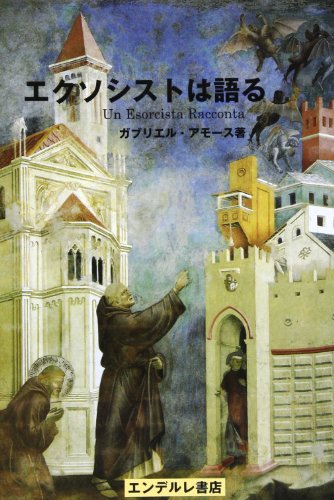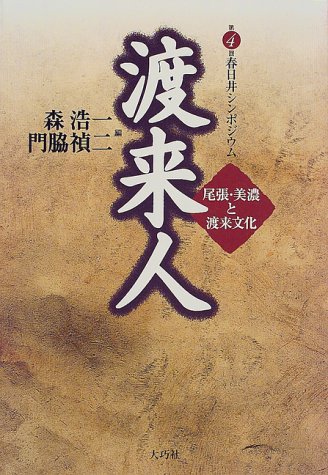1 0 0 0 OA AI翻訳と日本の大学におけるドイツ語教育
- 著者
- 木村 佐千子
- 出版者
- 獨協大学外国語教育研究所
- 雑誌
- 獨協大学外国語教育研究所紀要 = Dokkyo journal of language learning and teaching (ISSN:21875995)
- 巻号頁・発行日
- no.10, pp.77-95, 2022-03
1 0 0 0 OA 観測測器の更新により生じた気象官署での観測気温の差について
- 著者
- 松井 宏之
- 出版者
- 水文・水資源学会
- 雑誌
- 水文・水資源学会誌 (ISSN:09151389)
- 巻号頁・発行日
- vol.19, no.6, pp.496-502, 2006 (Released:2006-12-27)
- 参考文献数
- 7
- 被引用文献数
- 2 2
JMA-80型地上気象観測装置(以下,JMA-80)からJMA-95型地上気象観測装置(以下,JMA-95)への測器の更新に着目し,測器の更新により生じた観測気温の差を試算し,以下のような知見を得た.1)測器更新前後での地上気象観測値とアメダス観測値の差を用いて,測器更新時に生じた極値の差を概算することができる.2)JMA-80からJMA-95への更新により,月平均最高気温は+0.14±0.04℃(平均±標準偏差),月平均最低気温は-0.04±0.01℃(同)程度ジャンプしている.3)月平均最高気温,月平均最低気温の変化により,月平均較差も+0.18±0.04℃(同)程度ジャンプしており,ジャンプ幅の約7割は月平均最高気温のジャンプが寄与している.
1 0 0 0 OA クログワイの橙色斑点から分離されたNimbya scirpicola
- 著者
- 原田 幸雄 今泉 誠子 田中 博 根岸 秀明 藤森 嶺 山田 昌雄 本蔵 良三 三浦 喜夫
- 出版者
- The Phytopathological Society of Japan
- 雑誌
- 日本植物病理学会報 (ISSN:00319473)
- 巻号頁・発行日
- vol.58, no.5, pp.766-768, 1992-12-25 (Released:2009-02-19)
- 参考文献数
- 5
- 被引用文献数
- 3 2
1989年,宮城県名取市の休耕田において,茎が橙色の斑点を示すクログワイを発見した。橙色の病斑部から病原菌が分離され,胞子の形態,培地上のコロニーの形状から,Nimbya scirpicola (Fuckel) Simmonsと同定された。本菌は分離宿主のクログワイとタマガヤツリに対してのみ病原性を示し,イネを含むいくつかの主要栽培植物に対しては病原性を示さなかった。なお,クログワイから本菌が病原菌として分離されたのは日本で最初である。
1 0 0 0 幕藩制の成立と近世の国制
1 0 0 0 OA ヒト・メタニューモウイルス
- 著者
- 菊田 英明
- 出版者
- 日本ウイルス学会
- 雑誌
- ウイルス (ISSN:00426857)
- 巻号頁・発行日
- vol.56, no.2, pp.173-181, 2006 (Released:2007-04-20)
- 参考文献数
- 68
- 被引用文献数
- 6 3
ヒト・メタニューモウイルス(human metapneumovirus: hMPV)は,2001年に発見されたウイルスで,パラミクソウイルス科,ニューモウイルス亜科,メタニューモウイルス属に分類された.hMPVの遺伝子は,8個の遺伝子を持ち,N-P-M-F-M2-SH-G-Lの遺伝子配列を示す.hMPVのアミノ酸配列は,トリに感染するトリ・ニューモウイルスに最も類似している.ヒトのウイルスの中で遺伝子が一番類似しているウイルスは,臨床症状も似ているRSウイルスである.hMPVは,2つのグループ,さらにそれぞれ2つのサブグループに分れる.ウイルス表面には,F, G, SH蛋白が存在する.血清中に存在するhMPVに対する主な抗体は,F蛋白に対する抗体で,中和活性を持ち,2つのグループ間に交差反応性がある.ウイルス性の呼吸器感染症の中で小児では5~10%,成人では2~4%は,hMPVが原因と推測されている.乳幼児で喘鳴をきたす急性呼吸器感染症の原因ウイルスであることが多く,乳幼児,高齢者,免疫不全状態の患者では重症化の危険がある.本邦における流行のピークは,春である.再感染を防ぐための十分な終生免疫が一回の感染では得られず,幼小児期においても何度も再感染を受け症状を呈する.診断は,現在RT-PCRによるhMPV RNAの検出が最も感度が高い検査法である.
1 0 0 0 OA 大学運動部における組織風土の測定 : 測定尺度の開発と妥当性・信頼性の検討
- 著者
- 霜島 広樹
- 出版者
- 日本スポーツ産業学会
- 雑誌
- スポーツ産業学研究 (ISSN:13430688)
- 巻号頁・発行日
- vol.33, no.3, pp.3_215-3_233, 2023-07-01 (Released:2023-07-14)
- 参考文献数
- 26
The purpose of this study was to examine the structural concept of the organizational climate in college sports clubs and to develop a measurement scale that ensures reliability and validity. We conducted two studies as follows: 【Study1】: Based on previous studies, we created a scale to measure the organizational climate of college sports clubs, and conducted an exploratory examination of the factor composition of organizational climate through surveys and analyses of university students who had experience of belonging to college sports clubs. (Survey 1). Then, based on the results of the analysis, we conducted another survey and analysis targeting students who had experience of belonging to college sports clubs, and examined the validity and reliability of the structural concept of the organizational climate of the college sports clubs (Survey 2). 【Study2】: After partially modifying the measurement scale based on the results of Study 1, the validity and reliability of the scale were examined again. In addition, in order to verify the predictive validity of the scale, we analyzed the relationship between the organizational climate of the college sports clubs and the organizational commitment of the members to the clubs to which they belong. Analytical data were collected from students who had experience of belonging to a college sports club, as in Study 1 (Survey 3). The main findings are summarized as follows: We clarified 6 factors: “Warm atmosphere”, “Social contribution awareness”, “Deviation from ethics and morals”, “Control by rules”, “Fairness of penalties”, and “Acceptance of change”, as comprising the organizational climate of college sports clubs. And, as a result of the statistical analysis, the scale was confirmed to have sufficient reliability and validity.
1 0 0 0 エクソシストは語る
- 著者
- ガブリエル・アモース著 いつくしみセンター編
- 出版者
- エンデルレ書店
- 巻号頁・発行日
- 2007
1 0 0 0 採集と飼育 = Collecting and breeding
- 著者
- 採集と飼育委員会 編
- 出版者
- 日本科学協会
- 巻号頁・発行日
- vol.49, no.10, 1987-10
- 著者
- 薬王,智
- 出版者
- 日本理科教育学会
- 雑誌
- 日本理科教育学会全国大会要項
- 巻号頁・発行日
- no.41, 1991-08-01
- 著者
- 薬王 智
- 出版者
- 日本理科教育学会
- 雑誌
- 日本理科教育学会全国大会要項
- 巻号頁・発行日
- no.41, 1991
- 著者
- Shang-Chi Wu Lian-Yu Chen Po-Chang Hsiao Te-Tien Ting Cheng-Fang Yen Shu-Sen Chang Chung-Yi Li Hao-Jan Yang Chia-Feng Yen Chuan-Yu Chen Jiun-Hau Huang Yu-Kang Tu Wei J. Chen
- 出版者
- Japan Epidemiological Association
- 雑誌
- Journal of Epidemiology (ISSN:09175040)
- 巻号頁・発行日
- pp.JE20220356, (Released:2023-07-15)
- 参考文献数
- 41
Background: Administering premixed drugs in commodity packets was first reported in Asia in 2015, but there continues to be a dearth of related population-based data. This study aimed at examining (1) the prevalence of drug packet use in the population and (2) the sociodemographic profiles, particularly gender distribution, of drug packet users.Methods: Data were derived from a survey of 18,626 Taiwanese civilians, aged 12-64 years, using stratified, multi-stage, random sampling in 2018. Participants anonymously completed a computer-assisted self-interview on tablet computers which covered the use and problematic use of illicit drugs/inhalants, prescription drugs and other psychoactive substances, among others.Results: Approximately 1.46% of respondents had a lifetime use of illicit drugs, with drugs in commodity packets (0.18%) being ranked the fifth-most commonly used illicit drugs, higher than nitrous oxide (0.14%) and heroin (0.09%). Ten formats of drug packets were endorsed by users. Approximately 81.6% of persons with drug packet use had a lifetime use of other illicit drugs. The correlates of the use of drugs in commodity packets were similar to those of the exclusive use of other drugs except that there was a lack of gender differences in the use of drugs in commodity packets but not in the exclusive use of other drugs.Conclusion: Drugs in commodity packets have become a common way of administering illicit drugs in the population in Taiwan, and there were no gender differences among users. Our findings have implications for more efficient drug testing and culturally appropriate intervention for drug packet use.
1 0 0 0 基本現象編 摩耗への導入
- 著者
- 長谷 亜蘭
- 出版者
- 一般社団法人 日本トライボロジー学会
- 雑誌
- トライボロジスト (ISSN:09151168)
- 巻号頁・発行日
- vol.68, no.7, pp.446-448, 2023-07-15 (Released:2023-07-15)
- 参考文献数
- 25
1 0 0 0 OA 建築語彙のなかの「シブイ」とその国際化過程
- 著者
- 江本 弘
- 出版者
- 日本建築学会
- 雑誌
- 日本建築学会計画系論文集 (ISSN:13404210)
- 巻号頁・発行日
- vol.85, no.769, pp.753-759, 2020 (Released:2020-03-30)
- 参考文献数
- 4
Japanese professionals tend to harbor ambiguous feelings toward the overseas usage of the term Shibui in architecture, since despite being colloquially uttered in their language, they themselves have rarely used it as an actual architectural term. This divide in understanding seems to be a serious one, suggesting a potential miscommunication throughout the global sphere of architectural discussion. Based on materials mainly written in Japanese, English, and German since the 1920’s, this paper investigates the global reality of intercultural exchanges about this term, and how Japanese architects largely chose to sidestep them. The propagation of the notion of Shibui started within the Anglosphere around the late 1920’s. It was introduced as something untranslatable, but which represented the ultimate aesthetics of the Japanese, tending towards that which is simple, austere but meaningful. In the mid-thirties, a group of mainly foreign American readers got a hold of such influential works as Soetsu Yanagi’s The Folk-Craft of Japan and Harada’s The Lesson of Japanese Architecture. Non-Japanese-readers gradually came to know the word through these publications as well as daily conversations with speakers of the language. The German architect Bruno Taut [1880-1938] was one of those who experienced these circumstances while staying in Japan from 1933-36, and interpreted the ideal beauty of Japanese architecture as Shibui, or the “unobtrusive, quiet and harsh.” Besides Japan and the U.S., the German sphere in Europe was potentially another center for the production of knowledge about Shibui and Japanese architecture. While there was no German introduction of the word during the twenties, they had nourished their interest in the intrinsic modernity of Japanese traditional wooden construction as early as immediately after the end of WWI. A number of influencers would soon emigrate to the U.S., where Japanese promotion of Shibui to the American public was at the forefront, and the aesthetic of Shibui was in the process of making itself known to a German-reading public. Walter Gropius [1883-1969], for example, started to combine his idea of a “Japanese” modular, flexible, and nature-loving architecture with the word Shibui. In this early stage of outbound knowledge production, Japanese architects were pretty much uncommitted to it, as the word was too colloquial to be aesthetically defined in their own language, and they did not share the goal of propagating Japanese aesthetics, for which Shibui had become a buzzword. In the postwar craze of all things Japanese, the word gradually got popular among the Pacific-American public from the early fifties, before being further popularized by Elizabeth Gordon’s special issues in 1960 for “Discover Shibui” in the influential American magazine House Beautiful. However, due to her notoriously offensive attitude toward contemporary efforts in architecture, this prompted a string of critical backlashes. Japanese architectural historian Yuichiro Kojiro [1922-2000] spoke in The Japan Architect against Gordon’s “oh-so-wonderful romanticism,” and his criticisms would attract overseas followers like Bruno Zevi [1918-2000] in Italy. Thus was formed a global space of dispute over the modernity (and anti-modernity) of the naturalized and de-nationalized Shibui. In fact, most Japan architects did not have the means to know about this external phenomenon, and those who did had no avid motivation to join, since its contents kept changing and diversifying according to each player’s ambitions and local contexts, making the whole scene appear as a quite chaotic one to their eyes.
1 0 0 0 OA 山小屋の安全性向上に資する畳の耐噴石衝突特性評価
- 著者
- 立山 耕平 成毛 志乃 佐々木 寿 福井 拓哉 山田 浩之
- 出版者
- 特定非営利活動法人 日本火山学会
- 雑誌
- 火山 (ISSN:04534360)
- 巻号頁・発行日
- vol.65, no.2, pp.41-51, 2020-06-30 (Released:2020-07-06)
- 参考文献数
- 26
- 被引用文献数
- 1
In recent years, casualties caused by the impact of ballistic ejecta from sudden phreatic eruptions have drawn much attention, as observed with Mt. Ontake in September 2014 and Mt. Moto-shirane in January 2018. Hence, improvement of evacuation facilities (shelters) that protects against ballistic ejecta is expected as a forthcoming volcanic disaster prevention initiative. In many cases, the utilized evacuation facilities are outfitted by strengthening existing facilities such as mountain huts. Therefore, it is necessary to understand the baseline impact resistance against ballistic ejecta of the existing mountain huts. In the case of Japanese wooden buildings, Japanese-style rooms with tatami (Japanese-style thick straw mats) are often used. In this study, we focused on the impact resistance of tatami used for flooring. We conducted tests which simulated the impact of ballistic ejecta on various types of tatami, in order to assess the penetration limit of tatami. Three types of bodies of tatami (tatamidoko) were prepared: straw tatamidoko, non-straw tatamidoko type III, and straw sandwich tatamidoko. The projectile was simulated ballistic ejecta with a diameter of 128mm and a mass of 2.66kg, made using a vitrified grinding wheel. This object was launched at a speed of 22 to 69m/s using a pneumatic impact test apparatus. From the impact test, non-straw tatamidoko type III did not prevent penetration, even at an impact energy of 0.63kJ. Therefore, if non-straw tatamidoko type III was to be used in a mountain hut, it cannot be expected to protect against ballistic ejecta. On the other hand, the minimum energy of penetration of straw tatamidoko and straw sandwich tatamidoko were 4.9 and 4.1kJ, respectively, and they had sufficient impact-resistance against ballistic ejecta compared to the mountain hut roof. Thus, it was shown that the downstairs of straw tatamidoko and straw sandwich tatamidoko can be designated as “a safer place in the building”.
1 0 0 0 渡来人 : 尾張・美濃と渡来文化
1 0 0 0 OA 第二報告 子どもの権利条約と非行少年の人権 -少年法・刑事法の見地から-
- 著者
- 新倉 修
- 出版者
- 北海道大学法学部
- 雑誌
- 北大法学論集 (ISSN:03855953)
- 巻号頁・発行日
- vol.44, no.1, pp.81-94, 1993-06-30
- 著者
- Nakaya Ukitirô Toda Yasuaki Maruyama Syûzô
- 出版者
- Hokkaido Imperial University
- 雑誌
- 北海道帝國大學理學部紀要 (ISSN:0368217X)
- 巻号頁・発行日
- vol.2, no.1, pp.13-57, 1938-03-30
- 著者
- Nakaya Ukitirô Satô Isonosuke Sekido Yatarô
- 出版者
- Hokkaido Imperial University
- 雑誌
- 北海道帝國大學理學部紀要 (ISSN:0368217X)
- 巻号頁・発行日
- vol.2, no.1, pp.1-11, 1938-03-30
1 0 0 0 OA 故澤村專太郞敎授略歷並業績
- 出版者
- 京都哲學會 (京都帝國大學文學部内)
- 雑誌
- 哲學研究
- 巻号頁・発行日
- vol.15, no.6, pp.660-667, 1930-06-10

